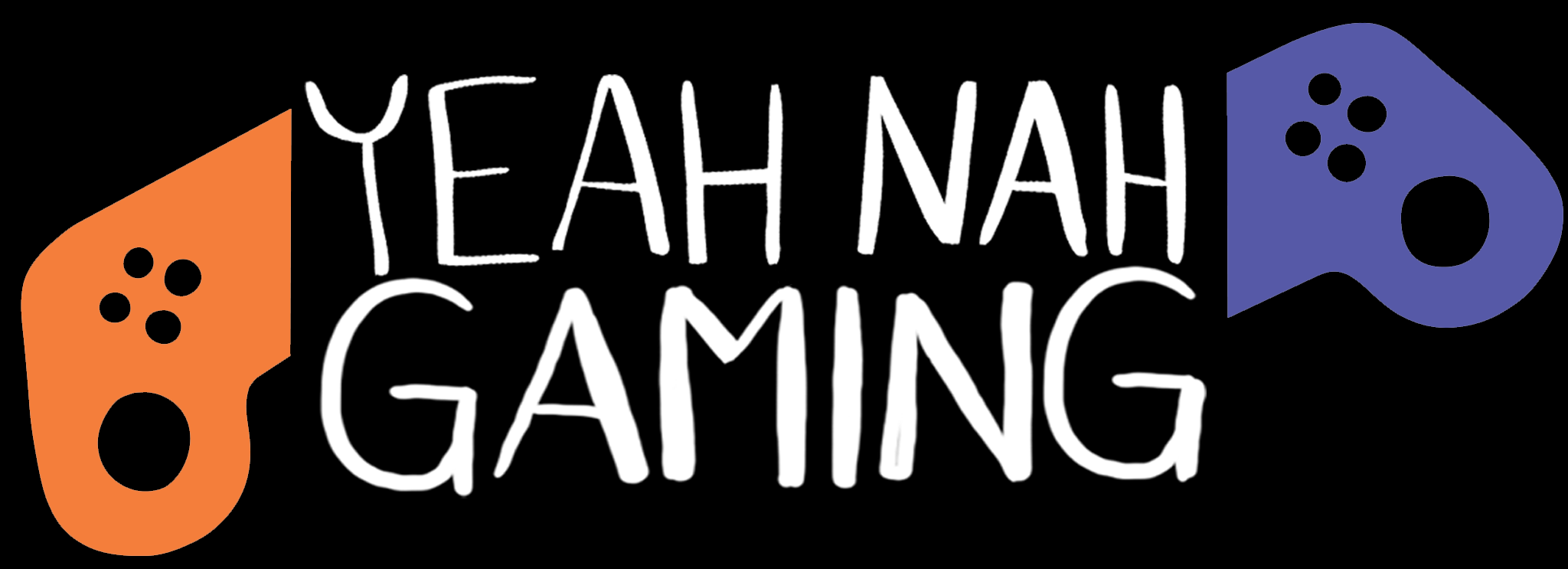Walk into almost any arcade in the country and you’ll probably spot Pump It Up. This iconic dance game has been a mainstay in arcades for a good 25 years, setting itself apart with its 5-panel dance pad, unique step patterns, and a certain flow that no other game can imitate. It’s hard to describe in mere words, but if you want an idea of what Pump’s all about, this Games Done Quick showcase by a top player called Zelllooo is worth a watch. (Just note that people don’t usually play blindfolded.)
With Pump It Up Rise—available now on Steam Early Access—this rhythm game stalwart gets its first official home release in a long, long time.
Bring Back the Beat
As of the early access launch, Pump It Up Rise has around 230 songs. While that’s not a huge number compared to other PC rhythm games, it’s a decent haul for the first phase of early access, and there are plans to add more tracks through regular updates and DLC to bring the total list to over 400. The launch track list mainly includes original music from the series’ 25-year arcade history, with many songs being remastered for this release. There are also 10 brand new songs (of 20 that have been announced), and 10 “Variety” songs that come from other games.
Those new songs are definitely the highlights. Frequent Pump It Up collaborators like Applesoda, WyvernP, and EmoCosine have dropped some of their most exciting, catchy, and memorable tunes yet for Rise, with absolute bangers like “Pull me up (feat. Monya)”, “Dizzy Dance, Street Light”, and “We Love Your Step”. The step chart designers and background animation artists brought the same energy, turning the new tracks into some of the most enjoyable rhythm game levels I’ve played.
The returning songs are all Pump It Up staples from the first game through to Pump It Up XX (2019), although limited to original music (i.e. no licensed tracks, with the exception of the Variety folder). That’s still a good spread, covering a wide assortment of genres, from a wide array of different EDM subgenres to hip-hop and metal. As well as the remastered audio for older songs, all tracks have had their background animations reworked in high-resolution, and most look much better as a result.
To go along with all this extra polish, Pump It Up Rise has a new comic-esque visual style that really pops. The new lifebar and arrow designs look flashy without being excessive, and there’s a really nice, sparkly hit effect on the target arrows. The in-game interface finds just the right balance in being bright and aesthetically distinct without being distracting. Menus and song select screens don’t have quite the same vibrant energy as the UI for the game proper, but they’re clean, tidy, and easy to navigate.

We Love Your Step
It’s worth noting that Rise isn’t simply a direct conversion of the arcade game, but an adaptation that’s been “fully reimagined and optimized for hand controls”. That means that while most step charts are based on their arcade counterparts, they’ve been modified to change patterns that would be uncomfortable or awkward when playing on keyboard or gamepad. Pump It Up’s arcade charts are unique among rhythm games in the way they force you to move your body, twist to hit arrows with opposite feet, hit two panels at once with one foot, and in some extreme cases, even use your hands. Through all this, there’s generally a smooth flow in the way one step leads into the next. I’ll admit, when I first heard about Rise being “optimised for hand controls”, I was worried that that identity would get lost.
I’m glad to say those fears were misplaced. Pump It Rise’s modified step charts retain the smooth flow and feel of their arcade counterparts. The only difference is that certain types of patterns that don’t really work well with a keyboard or gamepad—like big twists that would get your hands tangled up, or extended sideways runs that would force you to use one hand for a stream of notes—have been replaced with more keyboard- and gamepad-friendly alternatives. Crucially, the altered patterns still keep that same Pump flow, and in most cases, feel like they could just as easily exist in the arcade game. This isn’t just a side-effect of adapting charts from the arcade version, either; it’s true for brand new, Rise-exclusive songs as well.
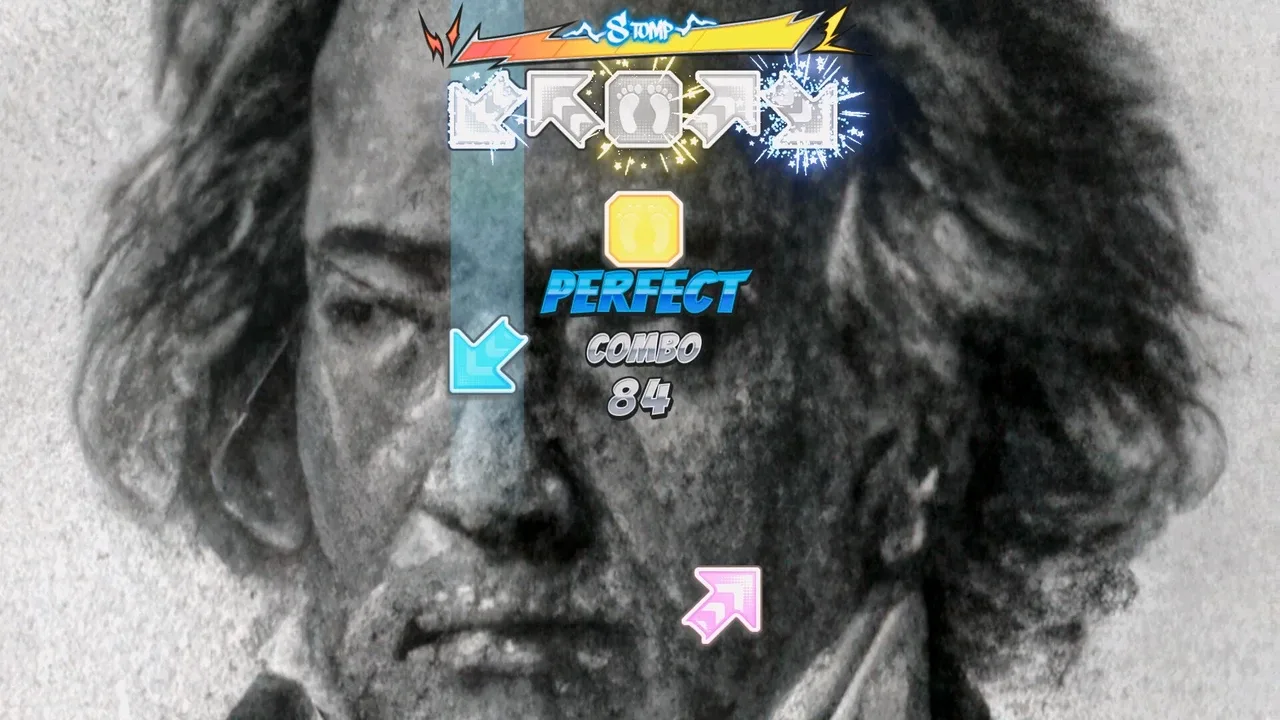
Indeed, there are already plenty of videos of people playing Rise on arcade-style controls. This isn’t intended and is officially discouraged, but the fact that it’s still viable up to a certain level shows just how well Rise retains the feel of arcade Pump It Up. Higher level charts (around level 18 and up) start introducing new patterns that wouldn’t really work that well on a dance mat but even then, the trademark Pump flow remains intact.
The other big change is the return of half double step charts. In arcade Pump It Up, there are two main ways to play: single (five panels, limited to the P1 or P2 side) and double (one player dancing across both P1 and P2 sides, using all 10 panels). Some older versions also had a half double mode, which was like double but confined to the six panels in the middle, three from each side. There’s no full double in Pump It Up Rise, but a fully-realised half double mode in its place: every song has at least a couple of half double charts, with many being adapted from their full double arcade counterparts.
This is another controversial move—double is extremely popular among arcade Pump players, with good reason—but I think it’s the right choice. A 10-button rhythm game can get messy on keyboard, and especially on a gamepad, but six buttons works really, really well. Half double lets Rise include the doubles dynamic in a way that fits the “hand play” design well, while also giving step chart designers room to play around with challenges and possibilities that are unique to this format.
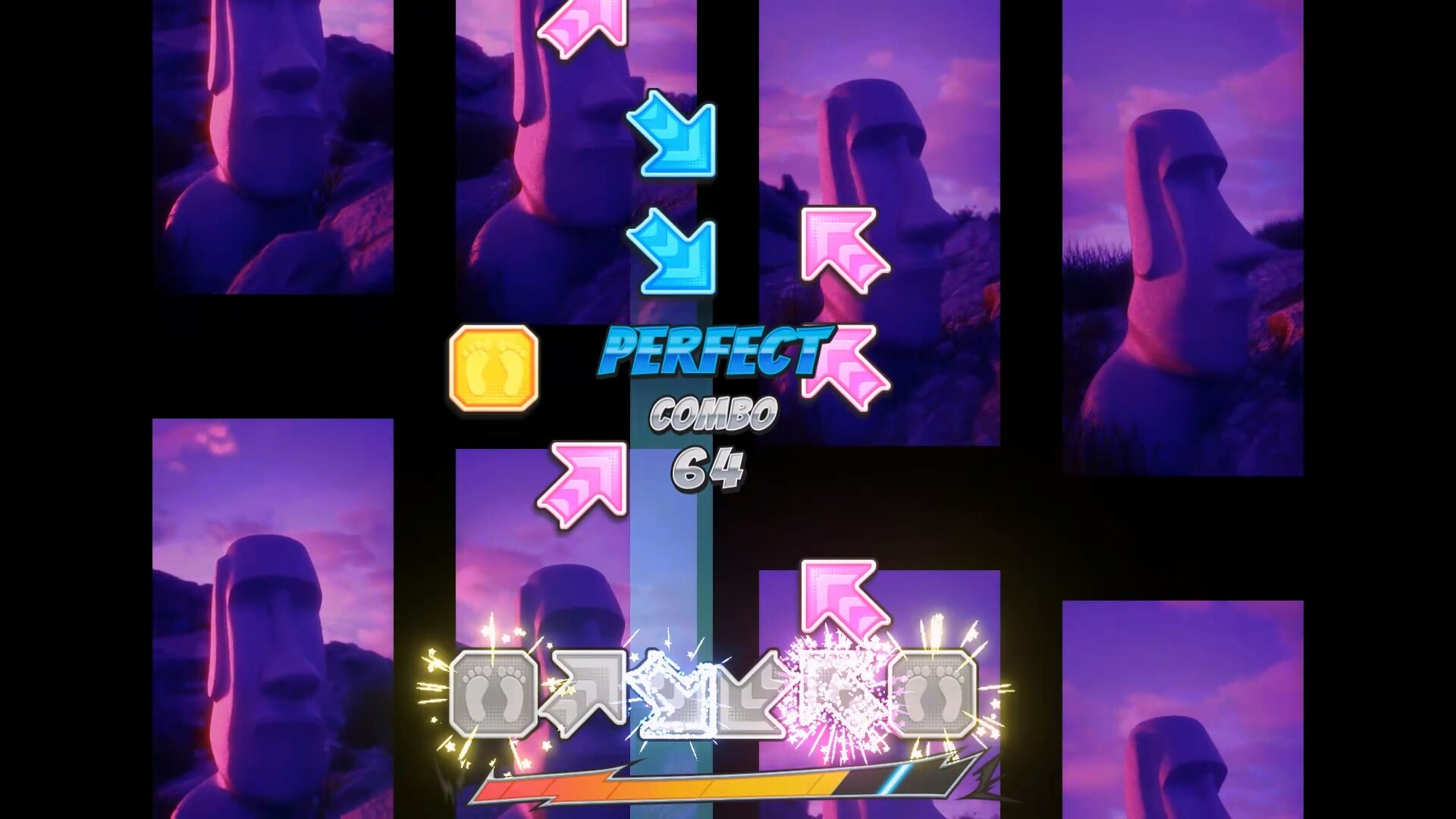
The People Didn’t Know
So, as far as the core game goes, Pump It Up Rise is already in a very solid state: good music, good step charts, good presentation. Where it comes up short is in some of the systems surrounding that, in terms of different game modes and player progression.
Rise has three different game modes—Warm Up, Division, and Challenge—but the game doesn’t do a great job of explaining what they are or how they work. Challenge is simple enough: there are 10 different courses, each with 2-4 songs for you to play back to back. Warm Up and Division are a bit more vague, in part because they’re almost identical at first glance. Each one presents you with the complete song list to freely choose from as you like, the only apparent difference being that Division allows you to “compete with users in the same division”.
What the game doesn’t tell you is that Warm Up, described as “free play practice” doesn’t save scores or song completion stats as typical “free play” mode would. It’s effectively a practice mode and nothing more: a place where you can practice songs without failing out if you run out of life, and play higher-level charts than what you’ve unlocked for Division mode (more on that in a sec). This misunderstanding isn’t helped by the fact that Division mode is locked until you complete at least one Challenge course, which helps create the false impression that Warm Up is the “standard” mode and Division is something different.
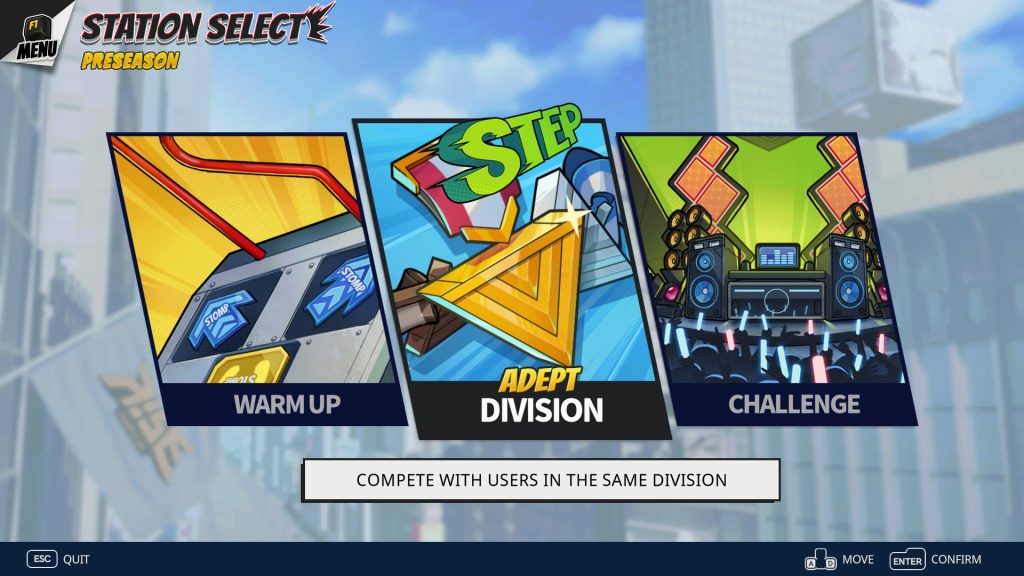
Division, on the other hand, is this game’s version of a “free play” mode in the typical sense. This is where you go to play songs, chase high scores, and save records of which charts you’ve got full combos or perfect games on. The catch here is that higher-level charts are locked until you complete a relevant Challenge course, and because each course spans a few different levels, you need to be able to pass a song at the highest level of a set group in order to unlock that whole group. Here’s an example: level 11 through 14 charts are locked until you complete the Adept challenge, which consists of a level 12, a 13, and a 14. If you’re at a place where you’re feeling comfortable with level 10 and ready to start trying 11s, you’re confined to Warm Up—which, again, doesn’t save scores or any other measures of personal progress—until you can comfortably pass a 12, a 13, and a 14. It doesn’t really make sense.
There’s a similar disconnect in the way songs unlock, too. Of the 230-odd songs in the game right now, 100 are locked to begin with, and need to be unlocked by raising your Profile Level. That’s an easy enough process, and adds a simple but effective element of player progression: playing songs gets you experience points to level up, and it generally only takes two or three songs per level. That’s fine. The disconnect in how many low-level charts are tied to this system: there are a lot of level 3 to 5 charts attached to songs that don’t unlock until a high Profile Level, while a fair few songs unlocked from the start don’t have any low-level charts at all. In the most egregious example, at the easiest end of the half double pool is a single level 4 chart … for a song that doesn’t unlock until Profile Level 67.
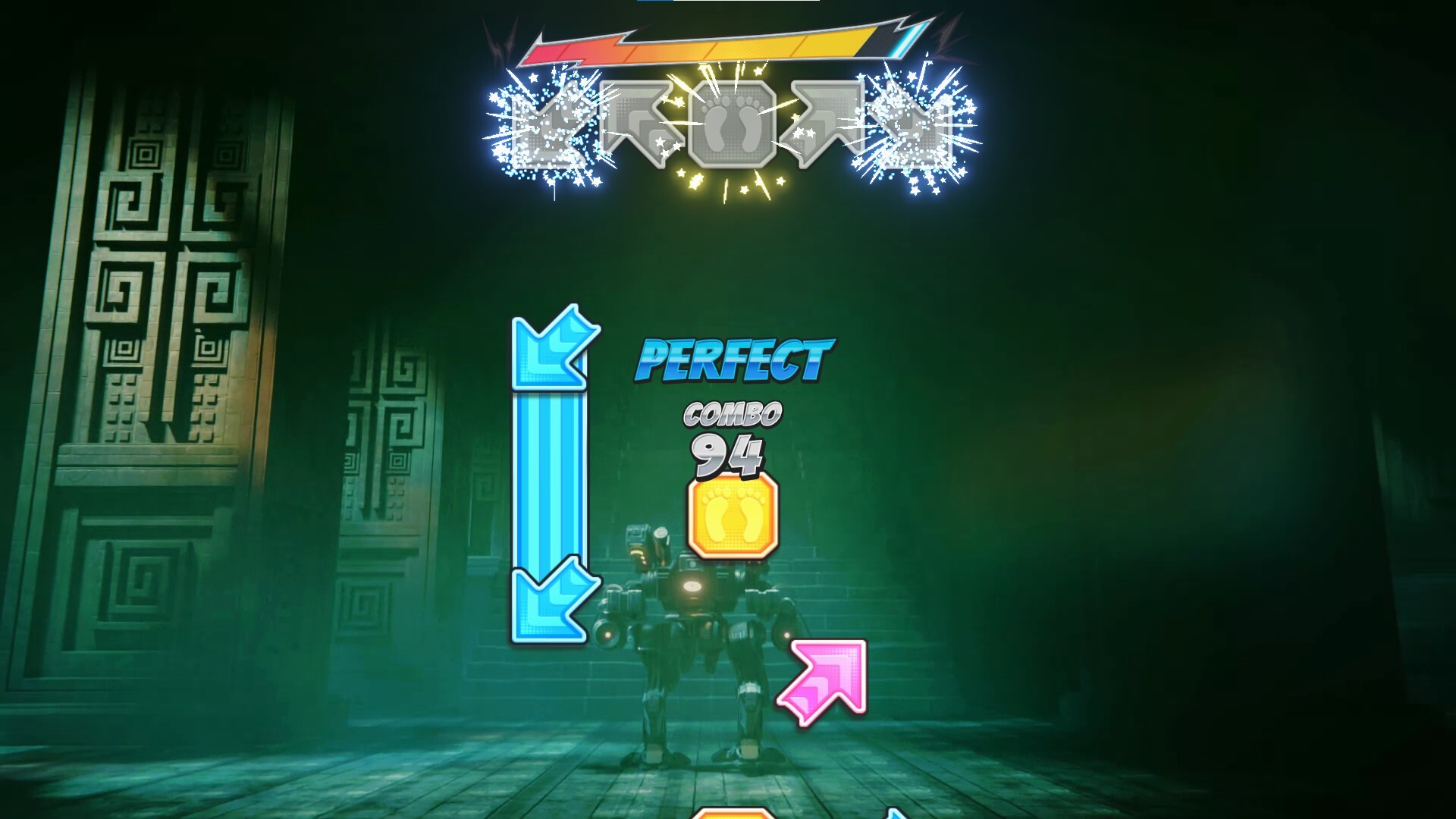
Robot Battle
As well as being the closest thing to a typical “free play” mode, Division is also the mode that, as it says, lets you “compete with users in your division”. There are individual leaderboards for all charts in your level range (as determined by the highest Challenge course you’ve cleared), as well as a separate “Battle” folder with a curated selection of charts and a leaderboard for the cumulative total across all of those. At the time of writing, Pump It Up Rise is in a “preseason”, which suggests that the future plan is for Battle songs and their associated leaderboards to refresh on some sort of schedule. All of that is great: it adds a fun dynamic of asynchronous competition to the score-chasing inherent in rhythm games, and gives extra motivation to push your limits.
But it’s odd that Division is doing double-duty as both the online competitive mode and what is effectively the free play mode. “Battle” is just one of a handful of different song folders in the list, giving it very little separation and making it seem like it’s just a shortcut to access those curated songs, when in reality it’s a different thing with its own rules. (You won’t earn battle score if you pick one of those selected charts from a different folder, for instance). It’d make much more sense for Battle to be its own, separate mode—let Division mode be just for Battle Score and division leaderboards, and turn Warm Up into a more standard free play mode with saved scores and personal progress / completion tracking.
Unfortunately, the inclusion of these online components also mean Rise is an online-only game, with no offline modes whatsoever. If you’re disconnected, you can’t play the game at all—an odd choice for a game using Steam Deck compatibility as a selling point, but the developers have stated unequivocally that there are no plans to change this.
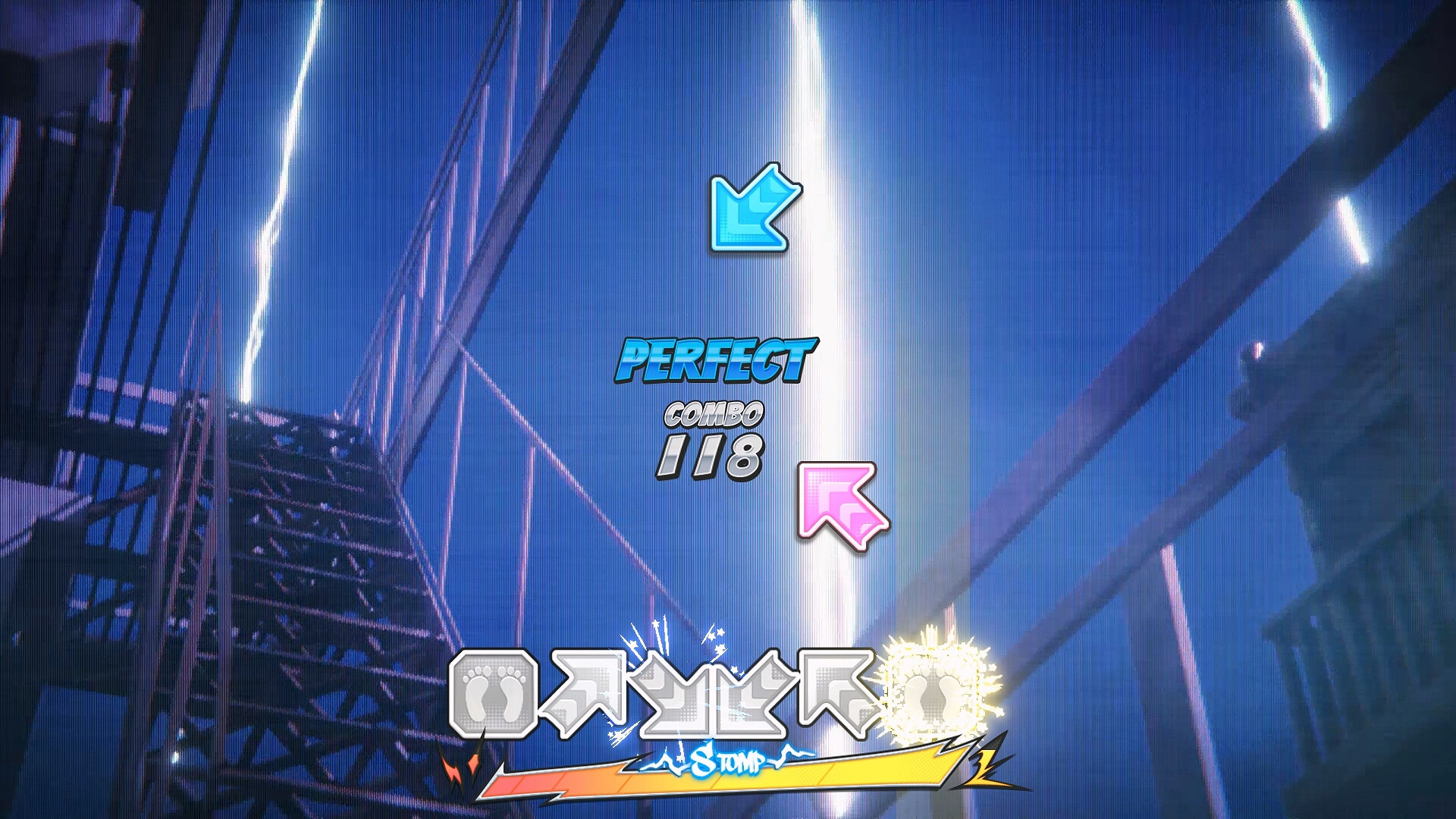
Further
Being an early access game, Pump It Up Rise is, by definition, in an incomplete state right now. The core game is fully functional and very polished, and the basic framework of an online competitive component is there, but there’s room to grow and take on player feedback. Aside from more songs, I don’t think there’s a specific roadmap of what else to expect, so I think it’s really going to depend on the feedback received from players and what the development team’s priorities end up being. I know that direct online multiplayer and user-created step charts are both suggestions that have been flagged, and could potentially be considered for future updates, but no promises yet.
That does raise questions about the price: NZD $64.49, a price tag that raised more than a few eyebrows when the game launched earlier this week. Value is subjective, but honestly, I don’t think it’s an outrageous amount when you consider how much is already in the game, and I personally think Rise is worth the asking. (I know I’ve spent more money on games that have given me less.) But it’s still a lot for an early access product where there’s an expectation of incompleteness and bugginess, and it might have been a better move to launch with a lower initial price and then increase it as more features get added and it gets closer to the full release.
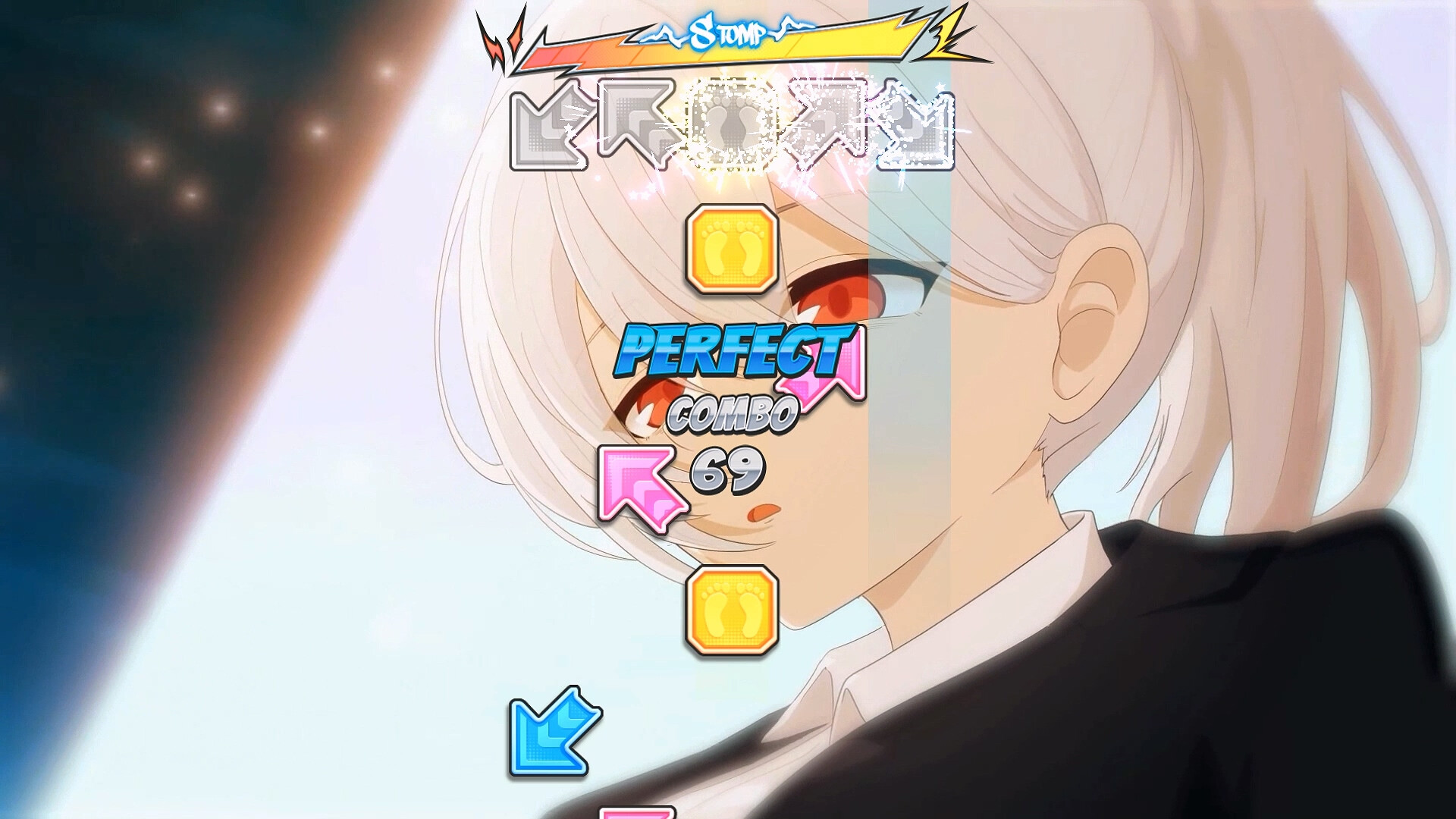
Rise Up
At the time of its early access release, Pump It Up Rise definitely has room for improvement. The structure of different game modes, unlock systems, and the way information is presented to players could all do with some tidying up, before you even get to sought-after features like direct multiplayer or user-created steps. But as far as the core of the game goes, Rise is rock solid: great music, nice presentation, and reworked step charts that honestly took me by surprise in how well they keep that Pump It Up feel. Any early access game will, by definition, be somewhat incomplete, but Pump It Up Rise hits the ground running.
(And for anyone who gets their first taste of Pump It Up with Rise, I’d encourage you to find your closest game centre and give the arcade version a try. You won’t regret it, I promise.)
There's room for improvement in terms of game modes and feature set, but as far as the core rhythm game goes, Pump It Up Rise hits all the right notes.
